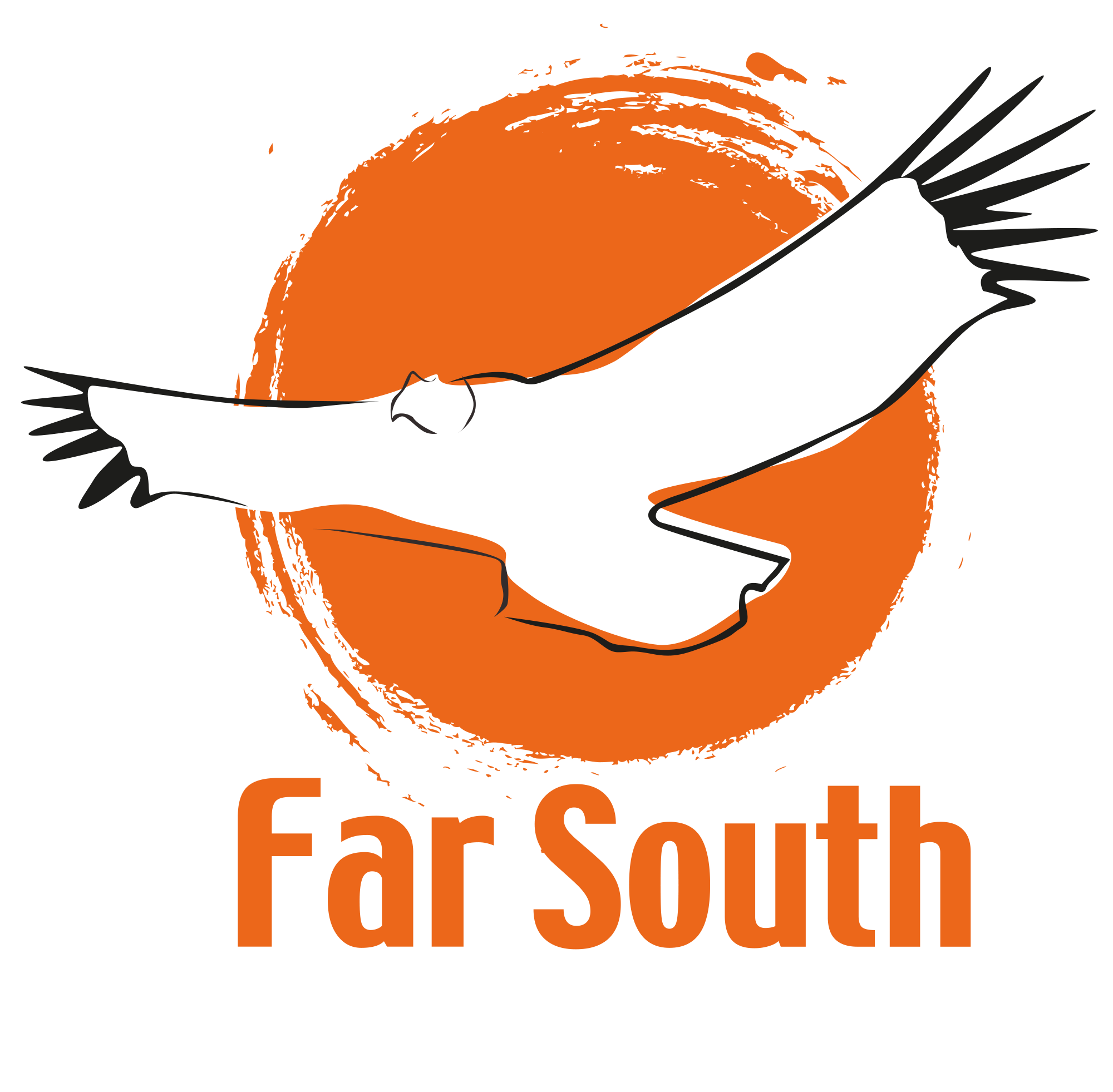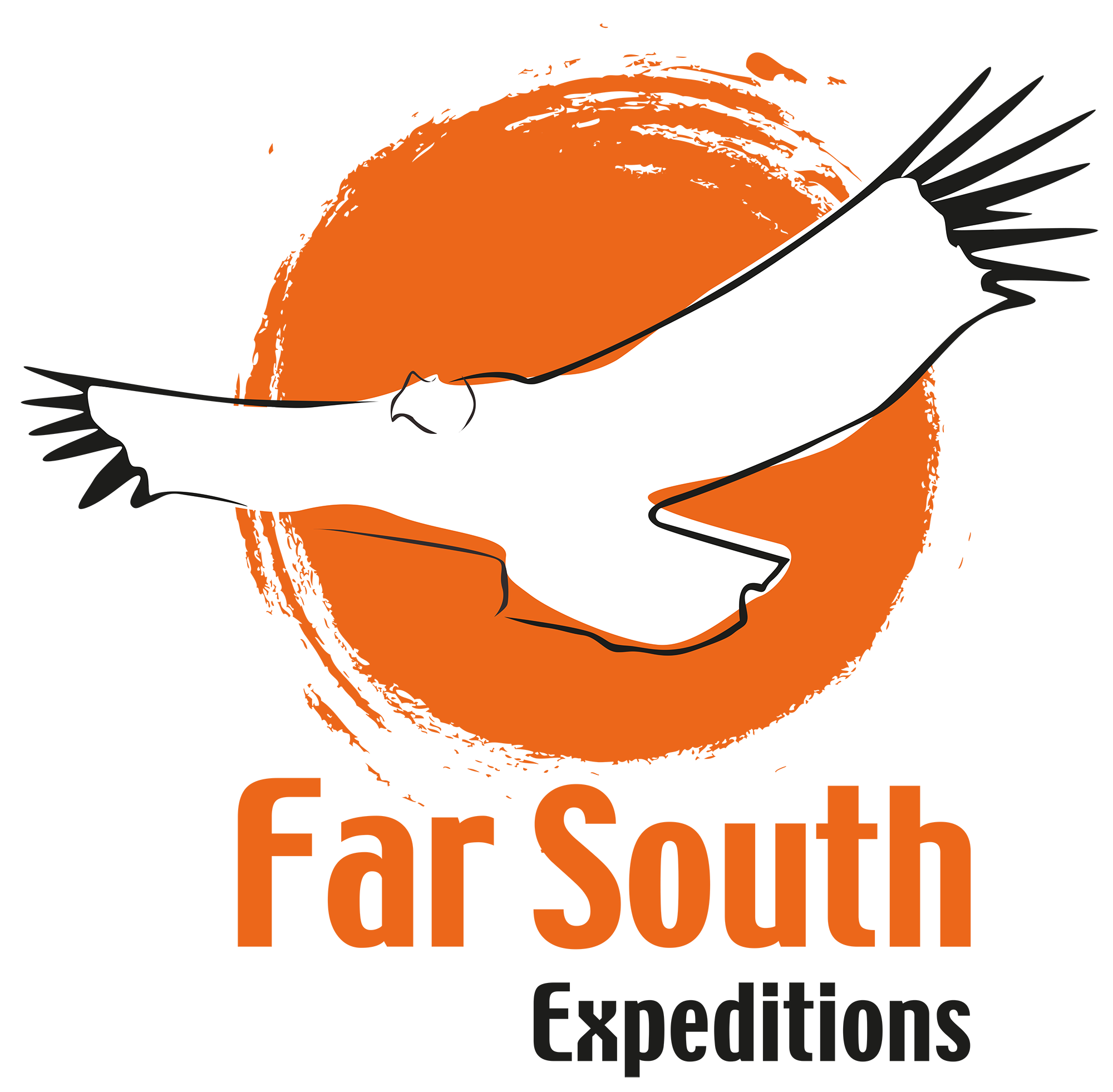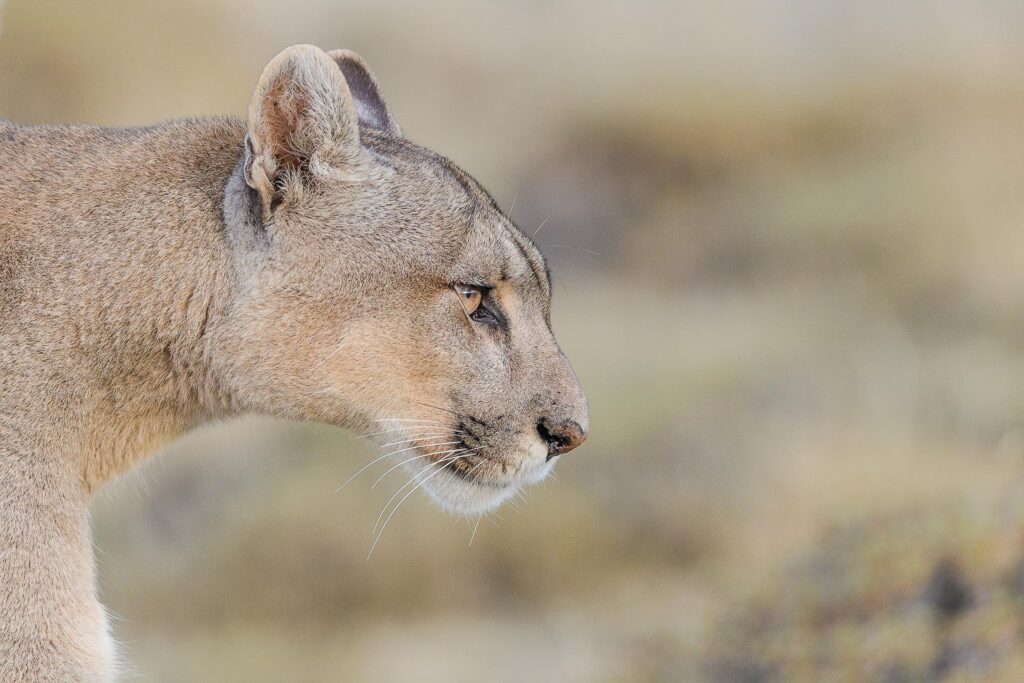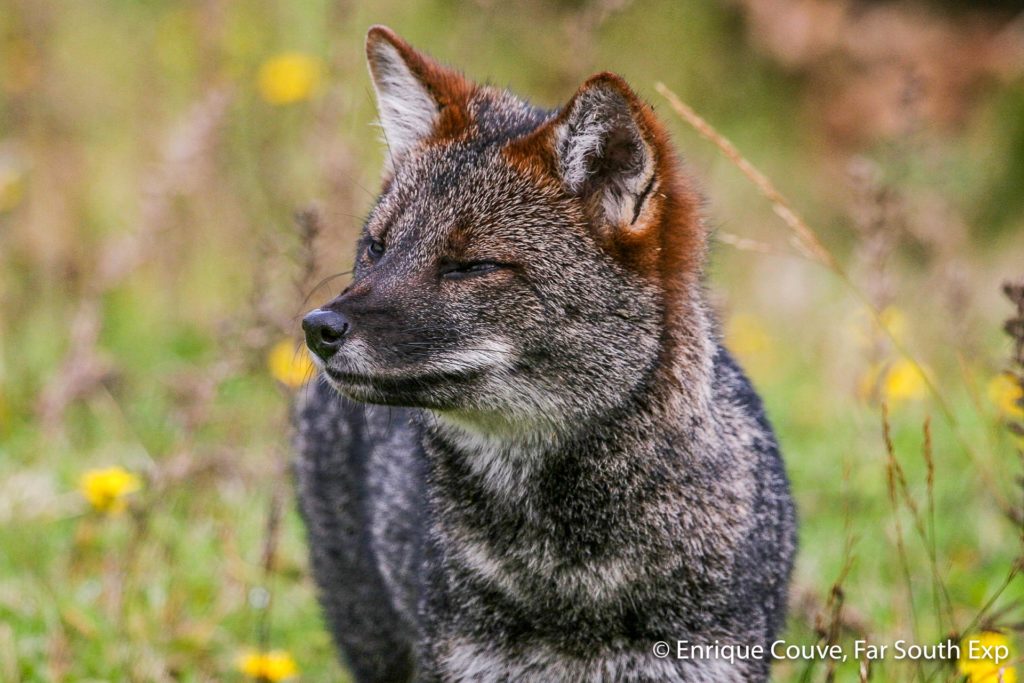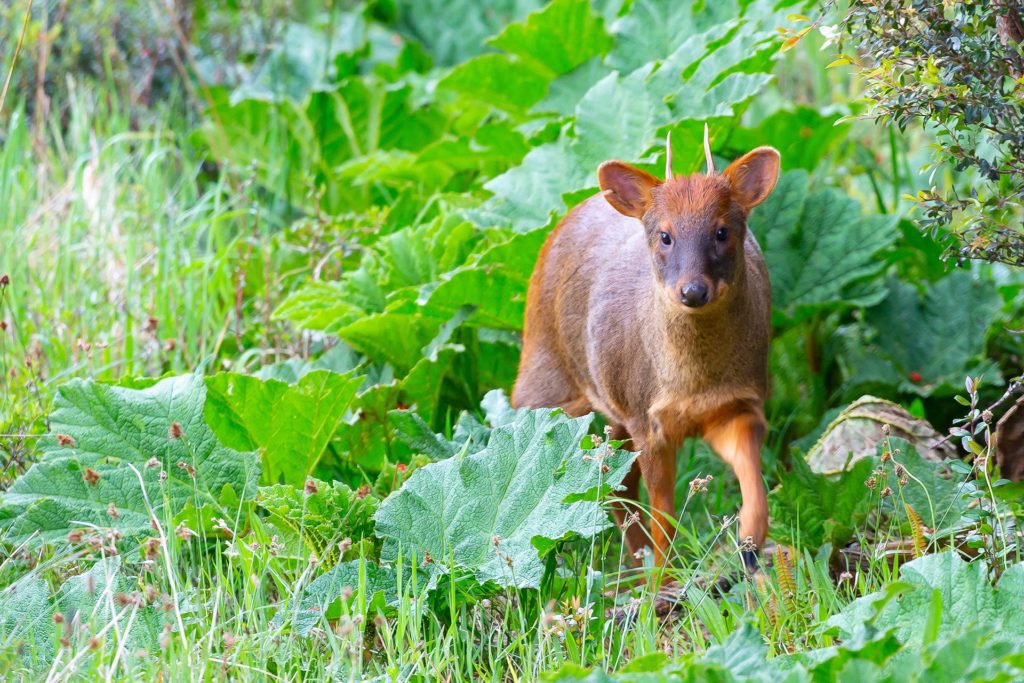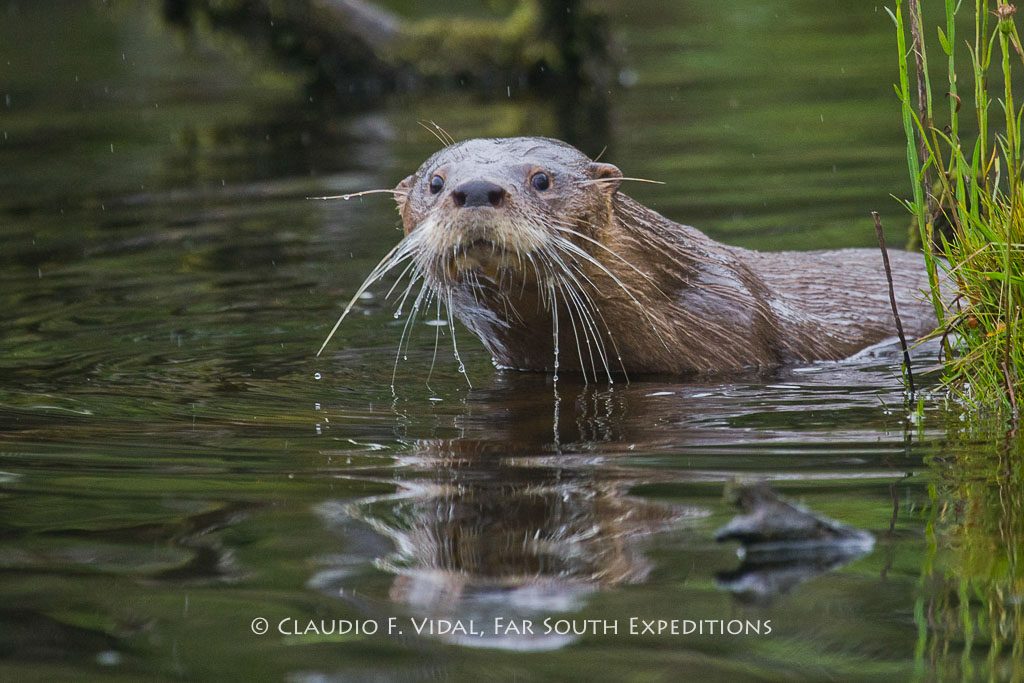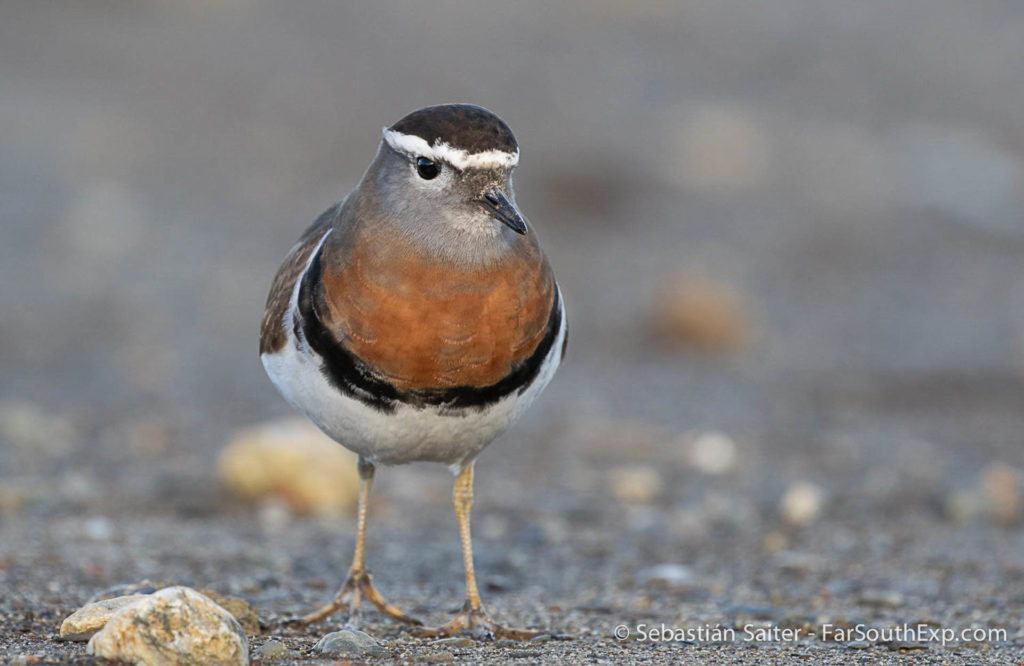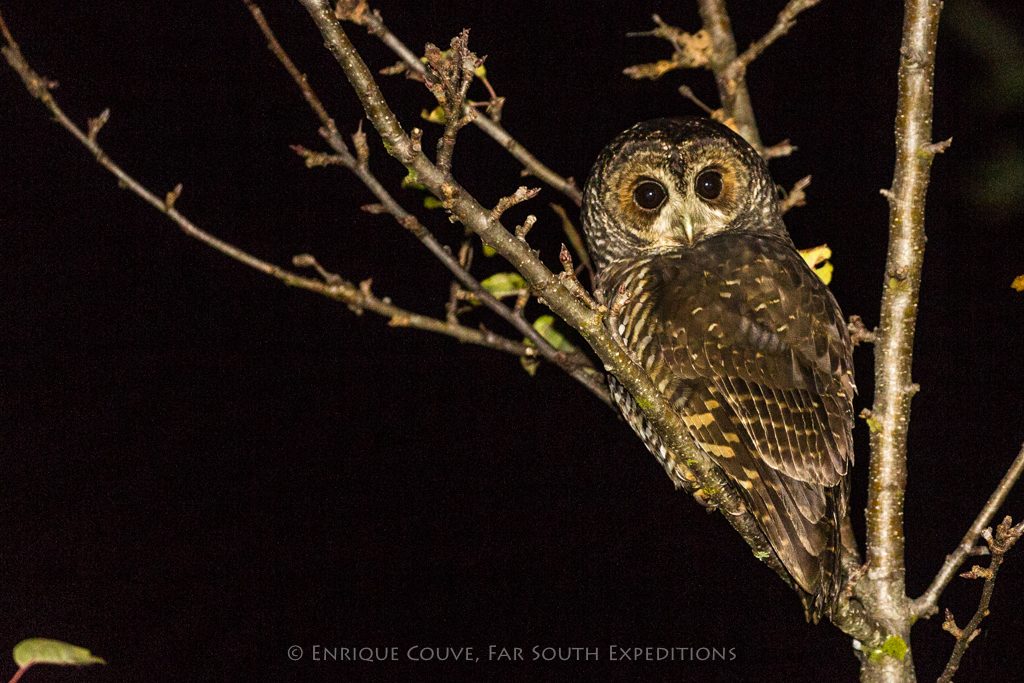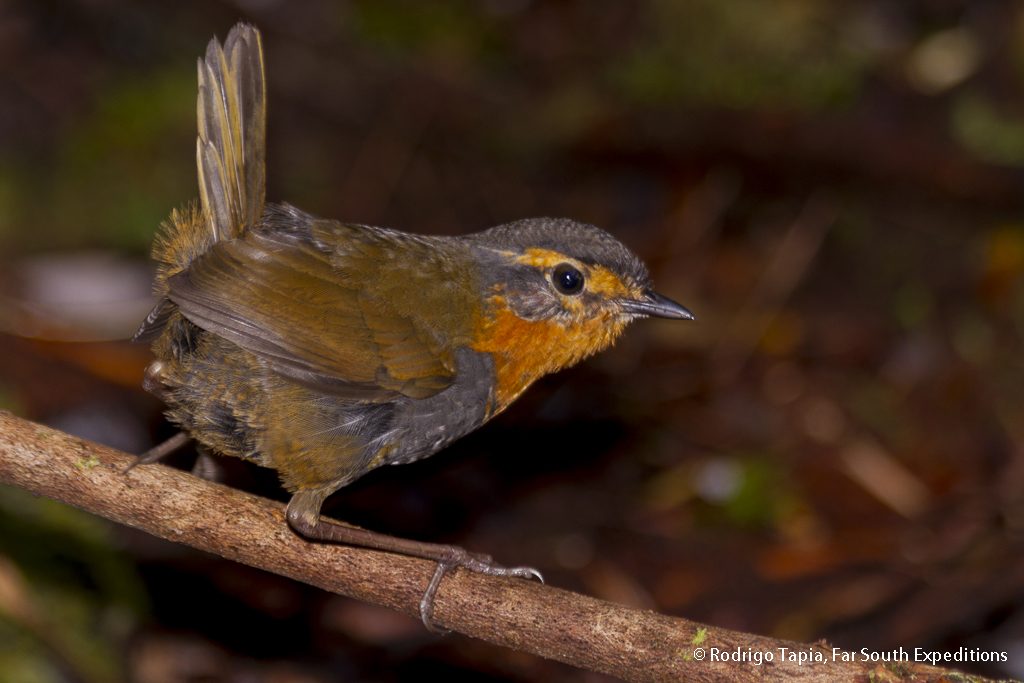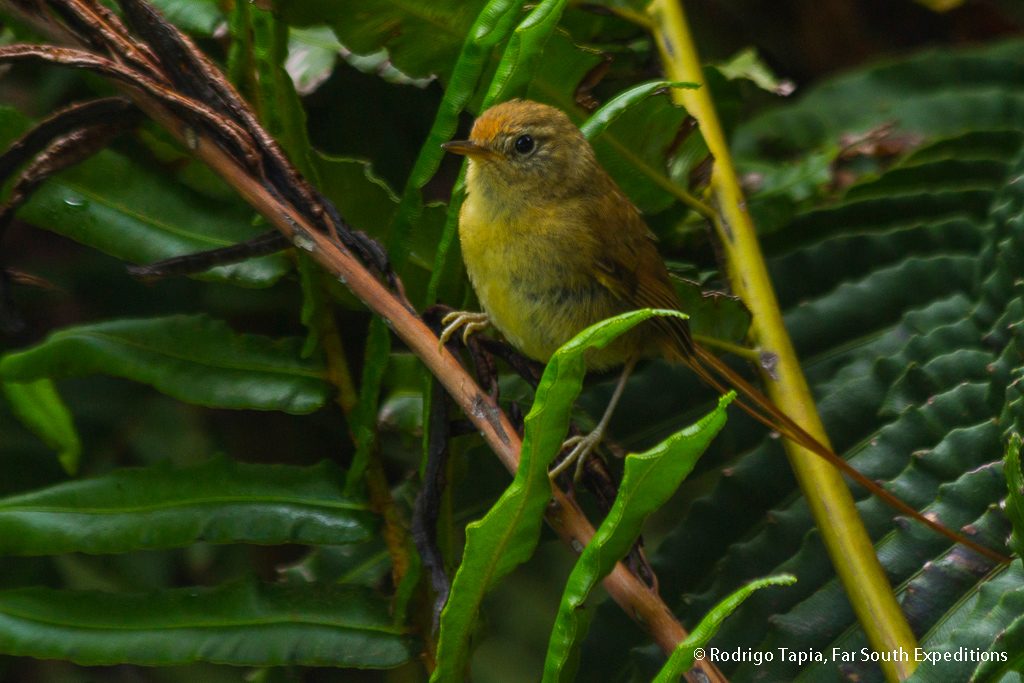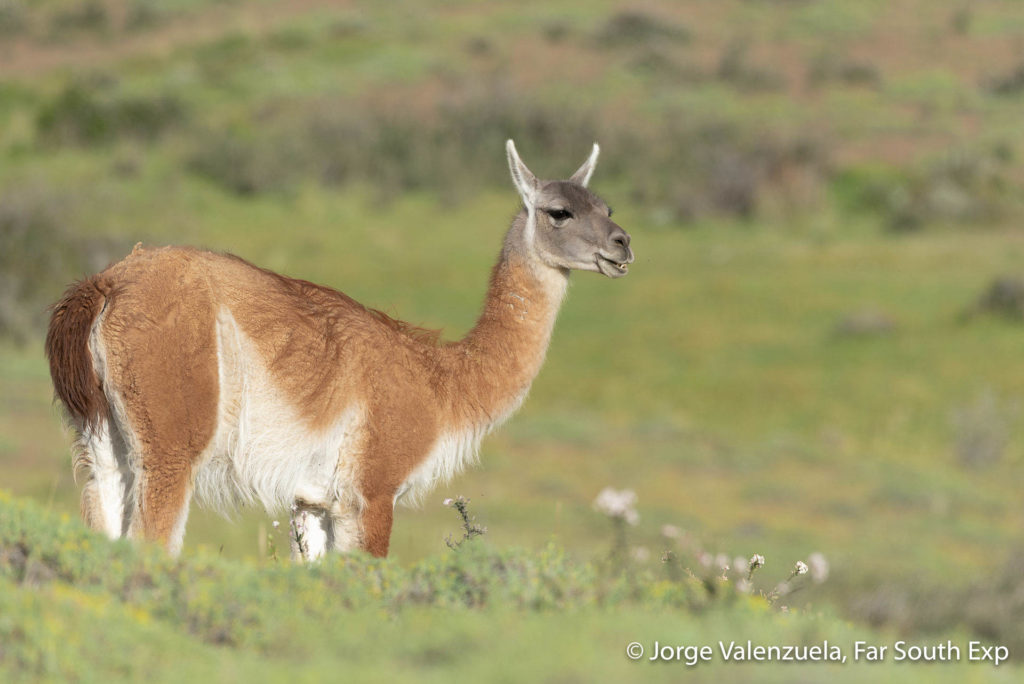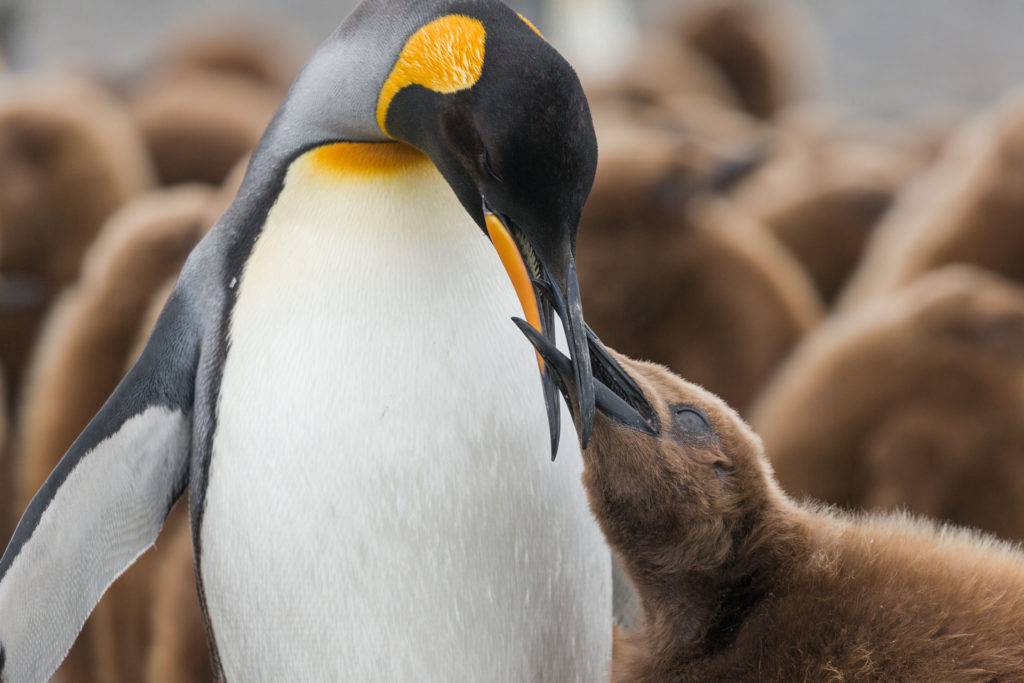Small group trip to observe and photograph the unique array of mammals and birds of the southernmost regions of Chile: Patagonia’s Chiloé Island, Torres del Paine, and Tierra del Fuego. This comprehensive itinerary presents us with the unique chance of exploring Patagonia and its mammals and birds. Most of the tours coming to the area are focused on beautiful landscapes and on the bigger animals that are the easiest to watch; with us, besides exploring and admiring the landscapes you will see a significant part of the endemic mammals and birds of the region, several of them very rare and/or difficult to observe. Ferry crossings and pelagic trips in Chiloe Island and the Magellan Straits are both very good for seabirds and marine mammals: Blue and Humpback whales and other cetaceans such as Chilean and Peale’s dolphins, South American Sea Lion, two species of local and highly range-restricted otters.
Mammals & Birds of Patagonia
Patagonia Mammal trips | Pumas & Condors in Southern Chile
Next departure: March 4-17, 2026
14-day trip. Starts/Ends: Santiago, Chile.
Magnificent seabirds including several tubenoses like Black-browed Albatross, Southern Giant Petrel, Southern Fulmar and Pincoya and Wilson’s Storm-Petrel, and up to three penguin species including Humboldt, Magellanic and King. In land, up to three species of fox including Darwin’s, Chilla and Culpeo, Puma and Guanaco, Huemul Deer, Hairy Armadillo, Patagonian Hog-nosed Skunk, Patagonian Weasel, and other mammals of the Valdivian temperate rainforest like the tiny Pudu Deer and hopefully Kodkod, one of the world’s rarest cats. Forest birds such as the magnificent Magellanic Woodpecker and endemic tapaculos, and rare waders including Magellanic Plover, Tawny-throated Dotterel, Rufous-chested Dotterel, Two-banded Plover and seedsnipes. As you can see, the variety of subjects on this quest for the mammals and birds of Patagonia is almost endless… like the memories you’ll keep of this memorable experience.
Patagonian Puma © Claudio F. Vidal, Far South Expeditions
Trip Highlights
• Explore lush and pristine Valdivian temperate forests, home to many endemic tapaculos and other woodland birds.
• Up to three dolphin species including Peale’s, Chilean and Commerson’s.
• Two species of local and highly range-restricted otters.
• Boat trip looking for dolphins and interesting seabirds including several tubenoses.
• Up to three species of fox including Darwin’s, Chilla and Culpeo.
• Comprehensive trip to Patagonia’s Torres del Paine with a focus on finding Puma.
• Ferry crossings in Chiloe Island and the Magellan Straits, both very good for seabirds and marine mammals.
• Rare waders including Magellanic Plover, Tawny-throated Dotterel, Rufous-chested Dotterel and Two-banded Plover, and Seedsnipes.
• Up to three penguin species including Humboldt, Magellanic and King.
Itinerary in Brief
Day 1 • Santiago – Flight to Chiloe Island – Tepuhueico Park (5 nights)
Days 2 & 3 • Exploring Tepuhueico Park
Day 4 • Drive to Queilen – Boat trip off Queilen – Tepuhueico Park
Day 5 • Chepu River boat trip – Tepuhueico Park
Day 6 • Puñihuil and Metalqui Island boat trip – Llanquihue (1 night)
Day 7 • Maullin River Estuary boat trip – Flight to Punta Arenas (1 night)
Day 8 • Ferry to Tierra del Fuego – Laguna de los Cisnes Nature Reserve – Porvenir (2 nights)
Day 9 • Useless Bay for King Penguins
Day 10 • Drive to Torres del Paine (4 nights)
Days 11, 12 & 13 • Torres del Paine – Puma tracking and other wildlife
Day 14 • Drive to Punta Arenas (or Puerto Natales) – Flight back to Santiago
Trip Map
Detailed Itinerary and Activities
Flight from Santiago to the island of Chiloé, a place full of traditions, customs and a unique wildlife, where we will explore several different locations and habitats. After a couple of hours driving, we will arrive to the secluded Tepuhueico Park, a magnificent, untouched example of the lush Valdivian Temperate Rainforests.
Overnight Tepuhueico Lodge (Lunch, Dinner)(Guide)
We will have two full days to explore the pristine Tepuhueico woodlands, which are part of the unique ecosystem known as Valdivian Temperate Rainforest. Tepuhueico Park has the reputation of being a reliable place to see the critically endangered Chilean endemic Darwin’s Fox. A few hundred individuals of this fox survive in the ecotone between the dense temperate forests and the coast. We will have interesting walks in search of Darwin’s Fox, Pudu Deer (the second smallest deer in the world) and the Kodkod or Guigna (a very rare woodland cat). While searching for this array of enigmatic and poorly known mammals, we find several endemic birds of the Patagonian woodlands such as Black-throated Huet-huet, Chucao, Ochre-flanked and Magellanic tapaculos, Patagonian Tyrant, Des Murs Wiretail, Chilean Pigeon, Magellanic Woodpecker, Chilean Hawk and Green-backed Firecrown.
Overnight Tepuhueico Lodge (Breakfast, Lunch, Dinner)(Guide)
We will drive south to Queilen, situated on the island’s east coast. From here, we will set off for the exciting quest of the Pincoya Storm-Petrel. This species has been described only recently and is endemic to these waters between Chiloe island and the mainland of Chile. The navigation takes about 5 hours. This inner part of the Chiloe archipelago offers an incredible diversity of sea mammals, such as Peale’s Dolphin, Chilean Dolphin, the enigmatic Burmeister’s Porpoise. There are also good chances to see the unmistakable Blue Whale. In the afternoon, on the way back to Tepuhueico, we take all our time for birding along the coast, on nearby freshwater bodies and in the island’s interior.
Overnight Tepuhueico Lodge (Breakfast, Lunch, Dinner) (Guide)
Early in the morning we will explore Chepu River. This meandering and pristine water course is bordered by lush, dense rainforests and its clear waters are home to a critically endangered species, the Southern River Otter. We will look for it and hopefully our patience and efforts will be rewarded. We will also have chances with the rare Rufous-tailed Hawk and the endemic Slender-billed Parakeet.
Overnight Tepuhueico Lodge (Breakfast, Lunch, Dinner) (Guide)
Today we will take a boat to explore two groups of islets that are home to a surprisingly diverse ensemble of seabirds and marine mammals. We’ll start with the closest to shore, Puñihuil Islets, where we’ll find Magellanic and Humboldt penguins, Flightless Steamer Duck, Kelp Goose and Red-legged Cormorant, among other seabird species, and Southern Marine Otter. We’ll then head south to Metalqui Islets, where we’ll watch a South American Sea Lion colony and small groups of South American Fur Seal. A careful inspection of the beaches might produce sightings of Southern Elephant Seal. On our way back we’ll first sail into offshore waters to look for the largest animal that has ever lived on our planet, the magnificent Blue Whale. There is a recently discovered nursery area for them in this region and the presence of a few hundred individuals has been documented in the whole archipelago, particularly on its western coast and around the Gulf of Corcovado. Blue Whales can be recognized at a distance by their impressive spouts, their bluish-back coloration and their very small dorsal fins. We will also have great chances of seeing pelagic seabirds such as Black-browed Albatross, Southern Giant Petrel, and Pink-footed, Sooty and Little Shearwaters. From here we’ll board the ferry back to Puerto Montt and drive to the lovely small town of Llanquihue, which is situated on the shore of the homonymous lake, where we´ll spend the night.
Overnight Hotel Boutique Casa Werner, Llanquihue (Breakfast, Lunch, Dinner) (Guide)
Today we´ll take another morning boat trip. This time we’ll explore the massive estuary of Maullin River. The target species here are the Southern Marine Otter and the two dolphin species (Chilean and Peale’s). We’ll have a good amount of time to navigate this broad estuary, enjoy the fabulous landscapes and look out for birds and mammals. In the afternoon, we’ll drive to the airport of Puerto Montt, from where we’ll take a 2-hour flight down to Punta Arenas, Chile’s southernmost city. Punta Arenas is located at the very tip of the South American Continent on the Northern shore of the Straits of Magellan.
Overnight Hotel Diego de Almagro, Punta Arenas (Breakfast, Lunch, Dinner) (Guide)
This morning, we will take a 2-hour ferry ride across the Straits of Magellan towards the town of Porvenir, in Tierra del Fuego. We will be entertained by an interesting array of tubenoses such as Black-browed Albatross, Southern Giant Petrel, Southern Fulmar, the delightful Cape Petrel, White-chinned Petrel, Sooty Shearwater, Wilson’s Storm Petrel and Magellanic Diving Petrel. We will see other seabirds including Magellanic Penguin, Chilean Skua, Kelp and Dolphin Gulls and South American Tern. Possible marine mammals will include the common South American Sea Lion and playful pods of Peale’s Dolphin. Once we land in Tierra del Fuego, we will check the coast where we shall see Crested Duck, Chiloe Wigeon, Baird’s and White-rumped Sandpipers, Magellanic Oystercatcher and Dark-bellied Cinclodes, among several other goodies. During the afternoon we will visit some alkaline lagoons east of the village. Our target here will be the local and odd-looking Magellanic Plover. This enigmatic wader looks more similar to a little dove rather than to any shorebird, and is often seen feeding ‘scratching’ the mud with its bright pink legs! Other birds of the area will include Two-banded Plover, Wilson’s Phalarope, the abundant White-rumped Sandpiper, Short-billed Miner and the ubiquitous Austral Negrito.
Overnight Hotel Barlovento or similar, Porvenir (Breakfast, Lunch, Dinner) (Guide)
We will continue east to explore the large embayment of Useless Bay (Bahía Inútil), where it is likely to find a wealth of seabirds and other aquatic birds. On route we will be checking for potential raptors including Variable Hawk, Aplomado and Peregrine Falcons. Magellanic Horned Owl nests in some ravines we will pass by. The main target of our visit to this scenic part of the island is the newly established King Penguin breeding colony. This splendid species congregates year-round on this site and they have successfully started to breed and raise young here. Later, and before heading back to Porvenir, we will drive through the shrubby slopes and moorlands of the Baquedano Hills searching for Rufous-chested Dotterel, Austral Canastero and the stunning White-bridled Finch.
Overnight Hotel Barlovento or similar, Porvenir (Breakfast, Lunch, Dinner) (Guide)
Today we will drive across the windswept Patagonia in search of steppe specialties including Ruddy-headed Goose, Least Seedsnipe, Tawny-throated Dotterel, Short-billed Miner, Band-tailed Earthcreeper and Chocolate-vented Tyrant. A short ferry ride will take us to back to mainland and if we are lucky we’ll have the striking Commerson’s Dolphin following the wake. Chilean Flamingos, Upland Goose, Coscoroba Swan, Silver Teal, Black-headed Duck and Rosy-billed Pochard are all found here. Waders such as Wilson’s Phalarope, Baird’s and White-rumped Sandpipers will be common at the roadside ponds while we explore and enjoy the beauty of this “big sky”, open country. From here you will be transferred to Torres del Paine National Park. During our journey to the park, we might find Guanaco, Southern Grey Fox, and Patagonian Skunk, while enjoying our first contact with Southern Beech (Nothofagus) forests. While visiting the valleys we will be given a geological interpretation of the origins of the dramatic backdrop of Torres del Paine, one of the finest natural spectacles in Patagonia.
Overnight Hosteria Pehoe or similar, Torres del Paine (Breakfast, Lunch, Dinner)(Guide)
We have organized a busy schedule of outings for pumas in the area. We will inspect the puma hunting grounds located in the eastern flank of the park and throughout the property of Estancia Laguna Amarga, where we have special granted access and an excellent relationship with the owners. The area is comprised by the northern coast of Sarmiento Lake, Laguna Amarga and Laguna Azul is well known for holding one of the largest concentrations of pumas in the wild. We will have the support of a 4×4 vehicle to move inside the ranch but we can also have easy to moderate walks, so a minimum degree of fitness is required in order to be able to keep up with the group. Topography is usually not too demanding but there might be differences in altitude of around 50-250m / 160-1,000ft sometimes, although your group will walk at a slow and gentle pace. Maximum elevation during this trip will be 300m/1,000ft above sea level. Pumas are normally quite active at night, early in the mornings and late in the evenings. Our activities will gravitate around these preferred times by cats, when they are usually patrolling their territory, hunting guanacos and other prey, interacting with their offspring or commuting from their hunting grounds to their dens. We will have two sessions each day, a morning session and an evening session (app. 4 hours each). During the middle of the day, we will not be watching pumas in order to avoid disturbance at a critical time, when they are resting, sleeping after a long night hunting elusive guanacos.
We will explore the ponds on the eastern side of the park in search of more waterfowl, including Spectacled Duck, Chiloe Wigeon, Speckled Teal, Yellow-billed Pintail and Crested Duck among others. Black-necked Swan and Great Grebe are also found here. Cinereous Harrier and Black-chested Buzzard-Eagle are often seen hovering in search of prey. Chilean Flicker, Striped Woodpecker and Austral Pygmy Owl will be our targets around a patch of secondary woodland. We will scan the white water rivers for the remarkable Torrent Duck. In the eastern side of the park, we’ll find groups of the southernmost representative of the camel family, the charismatic Guanaco. The reed-fringed lagoons can be very interesting: Andean Duck, Silvery and White-tufted grebes, and with luck the elusive and recently re-discovered Austral Rail, are all present here.
We will visit Lake Grey to enjoy the dramatic sight of its southern shore dominated by stunning blue icebergs, and the surrounding sub-Antarctic forests will provide with chances to see Thorn-tailed Rayadito, White-throated Treerunner, Austral Parakeet, Austral Blackbird and the striking Magellanic Woodpecker.
Overnight Hosteria Pehoe or similar, Torres del Paine (Breakfast, Lunch, Dinner)(Guide)
Drive to Punta Arenas airport for connecting flights to Santiago and home. (Breakfast)
Dates & Rates
Trip Length | 14 days, 13 nights | |
Dates | 2026 | March 4 to 17 |
Price per person (USD) (2024) | $8,498 | |
Single Supplement (USD) | $998 | |
The above prices are per person in US Dollars, based on double occupancy. All payments are in US Dollars.
Single supplement will be added if single accommodations are requested.
You Choose the Date. (Available from September through May). Ask for rates.
The trip price includes: All accommodations, meals and guide services as stated in the itinerary, private ground transportation during the tour, boat trips, and park entrance fees.
The trip price excludes: Domestic flights, tipping, travel insurance, entrance tax to Chile, excess baggage charges, drinks, à la carte dishes, laundry, telephone calls and anything else of a purely personal nature.
Domestic flights Santiago – Puerto Montt – Punta Arenas – Santiago (from US$ 300-400 per person).
This trip starts in Santiago, Chile and ends in Punta Arenas, Chile. An optional post-extension is offered to the Falkland Islands.
Kodkod or Guigna © Enrique Couve, Far South Expeditions
Tour Registration
To book this tour, please fill in our online registration form. We will process your booking and will send you a note with space confirmation and a transfer invoice with payment instructions within 24 hours. The transfer amount is 500 USD per person. Full payment of the tour fee is due 90 days prior to tour departure.
The trip will be confirmed 120 days before the departure date; if the required minimum number of participants has not been met by this date, the full deposit amount will be refunded.
Note: Inquiries received on Saturdays, Sundays and Holidays will be replied to during the following working day.
Cancellation Policy
Notice of cancellation can only be accepted in writing from the person who signed the booking form and takes effect on the day such noticed is received by us.
Refunds are made according to the following schedule:
• If cancellation is made 120 days or more before departure date, the transfer amount minus 200 USD is refundable.
• If cancellation is made between 120 and 60 days before departure, the transfer is not refundable, but any payments covering the balance of the fee will be refunded.
• If cancellation is made less than 60 days before departure date, no refund is available.
This policy and fee schedule also applies to pre-trip and post trip extensions, as well as any transfers from one tour to another. We strongly recommend the purchase of trip cancellation insurance to protect yourself. mammals and birds of patagonia

